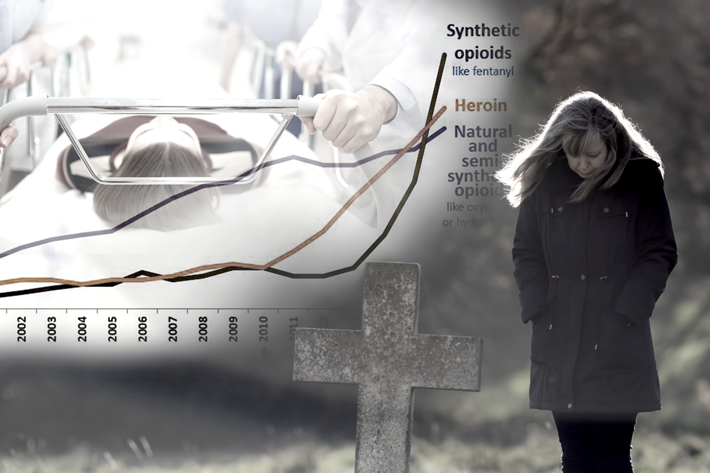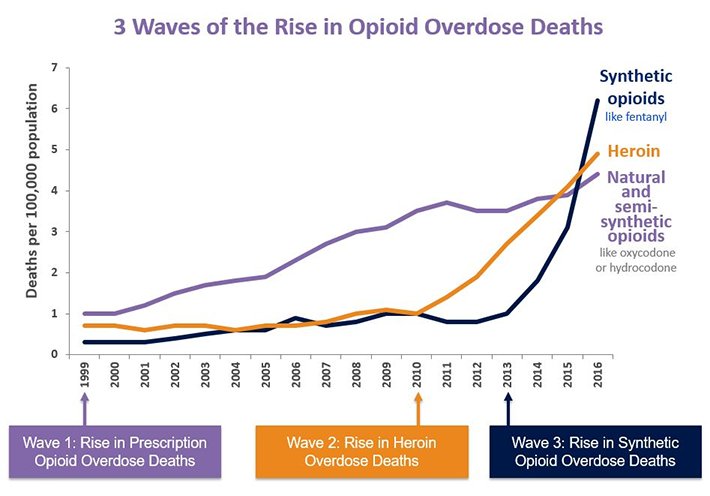The Opioid Epidemic in Numbers

The United States is struggling with a health epidemic, a crippling crisis that affects more than forty percent of the U.S. population. It started as a problem. By 2006 it was a crisis. In 2012 the Centers for Disease Control and Prevention labeled it an epidemic. In 2017, President Donald Trump labeled it a “National Public Health Emergency.” And yet still, to this day, millions of Americans do not know about this problem. The issue we are speaking of is, of course, the opioid addiction emergency.
Rather than just talking about how bad the opioid epidemic is in this article, we are going to do a statistical representation of the opioid problem, listing in exact numbers just how bad this problem has gotten. We’ll put the information in bullet points for readability. Even if you already know a thing or two about the opioid epidemic, this data will still likely shock you.
The Truth About the Opioid Epidemic
This information has been collected by the Centers for Disease Control and Prevention, the National Institute on Drug Abuse, the American Society of Addiction Medicine, and the U.S. Department of Health and Human Services. Take a look at the following facts and statistics on the opioid addiction emergency:
- According to the CDC, more than six-hundred and thirty-thousand people have died from drug overdoses since 1999. About four-hundred thousand of those overdose deaths have involved an opioid.
- In 2016, drug overdose deaths reached new highest-ever numbers. Also according to the CDC, more than sixty-three thousand people died from drug overdoses in 2016, and more than sixty percent of them were poor souls who had lost their lives from opioids.
- The overdose death rate from opioids in 2016 represented a figure that was five times higher than the figure in 1999 was. According to the CDC, about one-hundred and fifteen Americans die from opioid drug overdoses every day.

- In 2015, more than thirty-three thousand Americans died from overdoses on opioids. These deaths came from drug use with heroin, prescription opioid pain relievers, and synthetic opioids like fentanyl mixed with heroin. According to NIDA, that same year saw two million Americans who were brutally addicted to the very pain relievers that were supposed to help them, and another six-hundred thousand Americans hooked on heroin and synthetic opioids.
- According to NIDA, at least one-third of individuals who are prescribed an opioid pain reliever ends up abusing it. Also according to NIDA, eighty percent of the heroin addicts alive in the United States today actually originally started their drug use with opioid painkillers. Keep in mind that opioid painkillers were supposed to be a solution, not a gateway drug that causes addiction in millions and kills hundreds of thousands.
- Since the late 1990s when the American people were sold the concept that opioid painkillers were the “risk-free miracle cure to pain,” addiction statistics to these drugs increased by more than four-hundred percent. During that same time period, overdose deaths from these drugs increased by more than three-hundred percent. Admissions into treatment for opioid addiction increased by about two-hundred and fifty percent since then as well.
This is not even a full glimpse of the opioid problem. We could write an entire thesis or non-fiction work on this subject because it is a non-fiction issue. This is a very real problem, one that is getting worse every year too. We need to take massive action to reduce the crisis, and we need to reduce it with prevention and rehabilitation combined. We need to help those who are currently addicted to drugs and alcohol, and we need to prevent others from becoming addicted at the same time.
Sources:


